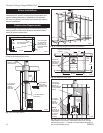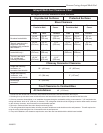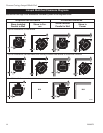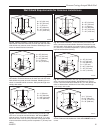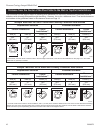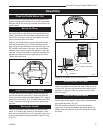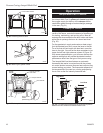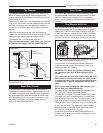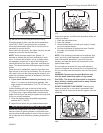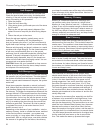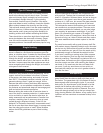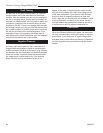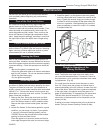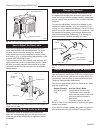
20
Vermont Castings Intrepid Multi-Fuel
2000970
When you’re not using the door handle, store it in the
holder behind the right front leg of the stove.
Use the Air Control Settings
that Work Best for You
No single air control setting will fit every situation. Set-
tings will differ depending on the quality of the fuel, the
amount of heat desired, and how long you wish the fire
to burn.
The control setting also depends on your particular
installation’s “draft,” or the force that moves air from the
stove up through the chimney. Draft is affected by such
things as the length, type, and location of the chimney,
local geography, nearby obstructions, and other factors.
When first using the stove, keep track of the air control
settings. You will quickly find that a specific setting will
give you a fixed amount of heat. It may take some time
to determine the amount of heat and the length of burn
you should expect from various settings and fuels.
Most installations do not require a large amount of com-
bustion air, especially if adequate draft is available.
Do not for any reason attempt to increase the firing
of your heater by altering the air control adjustment
range outlined in these directions.
Use the following air control settings as a starting point
to help determine the best settings for your installation.
Each is described as a fraction of the total distance the
lever may be moved from right to left.
Intrepid Multi-Fuel Control Settings
Burn Rate Primary Air Control
Low From far right to 1/3 the distance to left
Medium From 1/3 to 2/3 the distance to left
High From 2/3 the distance to left to far left
Before you start using the stove, please read the Draft
Management section starting on page 22 to see how
the features of your installation will affect the stove’s
performance. You and the stove are parts of a system,
and other parts of the system have a strong effect on
operation; you may need to vary your firing technique to
get the performance you want.
How To Build a Wood Fire and
Keep It Going
Conditioning Your Stove
Cast iron is extremely strong, but it can be broken with
a sharp blow from a hammer or from the thermal shock
of rapid and extreme temperature change.
The cast plates expand and contract with changes in
temperature. When you first begin using your Intrepid
Multi-fuel, minimize thermal stress by allowing the
plates to adjust gradually during three or four initial
break-in fires following Steps 1-3 below.
Burn only high quality wood or smokeless solid fuels in
the Intrepid Multi-Fuel, and burn it directly on the grate.
Do not elevate the fuel.
The damper must be open when starting a fire or
when refueling.
1. Open the stove damper, and open the primary air
control fully.
2. Place several sheets of crumpled newspaper in the
stove. Do NOT use glossy advertisements or colored
paper, as they can poison the catalyst. Place on the
paper six or eight pieces of dry kindling split to a
finger-width size, and on the kindling lay two or three
larger sticks of split dry wood approximately 1-2”
(25-50 mm) in diameter. (Fig. 36)
Do not use chemicals or fluids to start the fire.
Do not burn garbage or flammable fluids such as
gasoline, naphtha, or engine oil. Also, never use
gasoline-type lantern fuel, kerosene, charcoal
lighter fluid, or similar liquids to start or “freshen
up” a fire. Keep all such liquids well away from the
Intrepid Multi-Fuel while it is in use.
3. Light the newspaper and close the door. Gradu
-
ally build up the fire by adding a few 3-5” (80-120
mm) diameter splits. If this is one of the first few
“break-in” fires, let the fire burn brightly, and
then let it die out.
ST522a
Intrepid Multi-fuel
close doors
1/01
Open
Position
Closed
Position
ST522a
Fig. 35 To open the front doors, turn handle clockwise.



